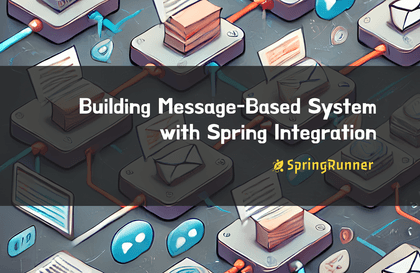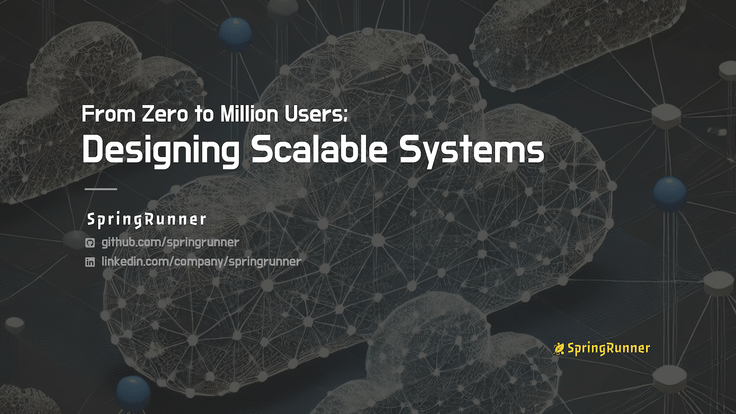
스프링 기반 메시지 중심 아키텍처의 이해와 실습
JYK 매니지먼트
많은 애플리케이션이 마이크로서비스 기반의 분산 시스템으로 통합되면서, 메시지의 중요성이 더욱 커지고 있습니다. 이 강의에서는 스프링 인티그레이션을 활용하여 메시지 중심 분산 시스템을 직접 구축하면서, 분산 시스템에서 메시지 통신의 중요성과 원리를 이해해 봅니다.
초급
MSA, spring-messaging, spring-integration-amqp
Modern digital products and services start from small ideas and grow to be loved by millions of users. The key to making this possible is scalable system design. In this course, you will learn the design principles and implementation methods for growing from small to large systems.

Learn the basic principles of scalable system design for growing from small to large services.
Learn about step-by-step design strategies and implementation plans that consider availability, performance, and scalability.
Learn about the roles and collaboration of platform, server, and client engineering.
Who is this course right for?
If you are familiar with programming but not with system architecture design
Those who do not have practical experience but want to understand the overall structure of software engineering and the principles of system design
Those who want to learn about the process of creating and operating large-scale services from small ideas
Need to know before starting?
You need experience with one or more programming languages (Java, Python, etc.).
You need to understand the basic concepts of computer science (CS) such as databases, networks, and algorithms.
You need a basic understanding of how HTTP and web applications work.
1,438
Learners
45
Reviews
4.9
Rating
3
Courses
JYK management
“Jazz Your Knowledge 🆙”
“당신의 지식을 더 신나게, 더 매력적으로 만들어라“
——
"당신의 아이디어가 세상을 바꿀 수 있습니다. 우리는 그 과정을 함께합니다."
All
16 lectures ∙ (1hr 19min)
Course Materials:
1. Scalable system
03:36
2. PROJECT #POTD
05:03
All
16 reviews
4.9
16 reviews
Reviews 2
∙
Average Rating 5.0
5
신청하고 한 번에 다 봤습니다! 이 강의는 초급자를 위한 강의라고 소개되어 있지만, 저는 IT 업계에 종사하는 모든 사람들에게 도움이 될 만한 내용이라고 생각해요! 공부, 취업, 이직을 목표로 달리다 보면, 자칫 '나무'만 보게 되고 '숲'을 보지 못하는 경우가 많습니다. (제가 그랬어요...ㅠ^ㅠ) 강의를 듣기 전에도 '검색 엔진', '스케일 아웃' 같은 개념은 들어봤고 알고는 있었어요. 그런데 그게 왜 필요해지는지, 그리고 도입 후 어떤 흐름으로 발전하는지까지 체계적으로 정리해서 이해하고 있진 않았습니다. 그래서 만약 제가 이 강의에서 다루는 내용을 설명했다면, 결국 제가 그나마 잘 아는 특정 개념(나무)에 치중됐을 거예요. 하지만 이 강의에서는 그런 개념들이 어떻게 연결되어 전 세계 트래픽을 감당하는 거대한 서비스로 확장되는지를 자연스럽게 이해할 수 있도록 해줍니다!! 덕분에 서비스 설계를 더 넓은 시야에서 바라볼 수 있게 됐어요! 강의가 꼬리에 꼬리를 물고 진행되는 느낌이라 너무 재미있어서 한 번에 정주행했지만, 앞으로도 자주 찾아보게 될 것 같아요!
Reviews 1
∙
Average Rating 5.0
Reviews 19
∙
Average Rating 5.0
Edited
Reviews 12
∙
Average Rating 5.0
Reviews 3
∙
Average Rating 5.0
$8.80
Check out other courses by the instructor!
Explore other courses in the same field!